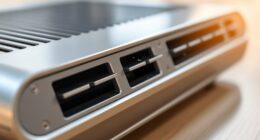Did you know that over 70% of people with rebonded hair experience curly roots as their hair grows back? If you’ve recently undergone a rebonding treatment, maintaining the smoothness of your hair evenly can be difficult due to different textures. But don’t worry! In this article, we are excited to provide tips and techniques on how to properly care for your rebonded hair with curly roots, allowing you to confidently display your silky and beautiful mane.
Key Takeaways:
- Rebonding can lead to curly roots as new hair grows
- Transitioning from rebonded to curly hair is a gradual process
- Proper hair care during transitioning is essential for maintaining the health of your hair
- Protective hairstyles and gentle products can help manage the different textures
- Regular salon visits and aftercare routines are crucial for maintaining rebonded hair
Understanding the Transitioning Process
When it comes to managing rebonded hair with curly roots, understanding the transitioning process is essential. Transitioning is the gradual journey of getting back your natural curls while cutting off the damaged, chemically treated hair. This process can take several months to a year, as new hair grows in with its natural texture.
Chemically treated hair, such as hair that has undergone rebonding, cannot revert back to its natural curls without embracing the transitioning process. It’s important to be patient and take the necessary steps to care for both the damaged hair and the new curly roots.
During the transitioning process, it’s common to have two different hair textures – straight, rebonded hair and new, curly roots. Embracing this dual texture and finding ways to manage both is key to achieving the desired look.
“Transitioning involves gradually cutting off the damaged, straightened hair while taking care of the new curly roots.”
While transitioning, many individuals choose to use protective styles like braiding or wearing buns to help manage the different textures and promote healthy hair growth. These hairstyles help in minimizing breakage and creating a seamless blend between the two textures.
It’s important to note that every person’s transitioning process is unique, and it requires patience and dedication. By embracing the journey and following targeted hair care routines, you can effectively transition back to your natural curls and achieve the desired look.
See the table below for an overview of the transitioning process:
| Transitioning Process | Duration |
|---|---|
| Cutting off damaged hair gradually | Several months to a year |
“Understanding the transitioning process is essential for managing rebonded hair with curly roots.”
Taking Care of Hair During Transitioning
During the transitioning process, it is important to provide your hair with extra care and attention. As you embrace your natural curls and gradually cut off the chemically treated ends, implementing a proper hair care routine can help maintain the health and manageability of your transitioning locks.
Gentle Cleansing and Conditioning
Switching to gentle shampoos and conditioners is crucial for preserving the natural oils in your hair and preventing further damage. Look for products formulated specifically for curly hair or those labeled sulfate-free. These types of shampoos and conditioners will cleanse your hair without stripping away its moisture, ensuring your curls stay nourished and hydrated.
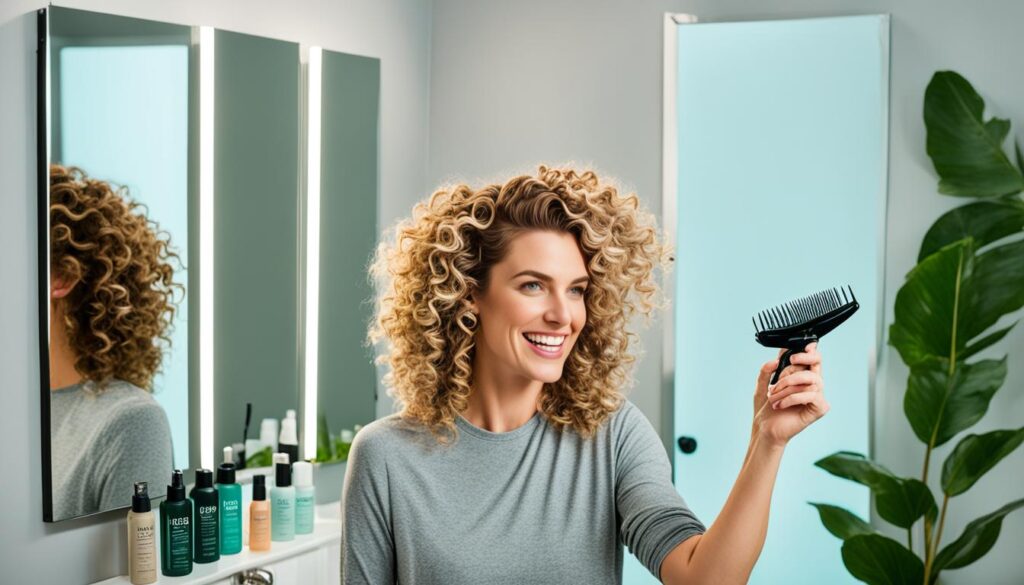
Deep Conditioning and Hair Masks
Integrating deep conditioning treatments and hair masks into your hair care routine can provide much-needed moisture and strength to your transitioning hair. Look for products that are rich in hydrating ingredients like shea butter, coconut oil, or argan oil. Apply these treatments once or twice a week to nourish and repair your tresses, reducing breakage and improving overall hair health.
Protective Hairstyles
Managing the different textures of transitioning hair can be challenging, but protective hairstyles can be a game-changer. Braids and buns are great options to help protect your hair from excessive manipulation and minimize breakage. Additionally, these styles can help blend the two different hair textures, allowing for a seamless transition.
“During transitioning, opting for protective hairstyles like braids or buns can help protect your hair from damage while allowing it to grow,” says hairstylist Rachel Johnson.
The Importance of Aftercare for Rebonded Hair
After undergoing the rebonding process, it is essential to prioritize aftercare to maintain the health and smoothness of your newly straightened hair. Proper aftercare can help prevent damage, promote hair growth, and preserve the longevity of the rebonded treatment. Here are some key aspects of aftercare that can aid in maintaining rebonded hair:
Avoid Heat Styling
One of the most crucial steps in aftercare for rebonded hair is to avoid excessive heat styling. Heat can weaken the chemical bonds in the hair, leading to frizz, breakage, and loss of the straightened effect. Opt for air-drying your hair whenever possible and limit the use of heat styling tools such as straighteners and curling irons.
Use Gentle Shampoos and Conditioners
Choosing the right hair products is vital for maintaining rebonded hair. Look for gentle shampoos and conditioners specifically formulated for chemically treated hair. These products are designed to cleanse without stripping the hair of its natural oils and can help retain moisture, preventing dryness and brittleness.
Regularly Trim the Hair
Trimming the hair regularly is important to prevent split ends, maintain a neat appearance, and promote healthy hair growth. Schedule regular haircuts every 6-8 weeks to remove any damaged or split ends, keeping your rebonded hair in optimal condition.
Deep Treatments and Salon Visits
Indulging in deep conditioning treatments can provide an extra boost of hydration and nourishment for rebonded hair. These treatments help restore moisture, repair damage, and rejuvenate the hair’s appearance. Additionally, regular visits to the salon for touch-ups and professional treatments ensure that your rebonded hair receives the specialized care it needs.
Table: Essential Aftercare Tips for Rebonded Hair
| Aftercare Tip | Description |
|---|---|
| Avoid Heat Styling | Minimize the use of heat styling tools to maintain the straightened effect and prevent damage. |
| Use Gentle Shampoos and Conditioners | Opt for hair products specifically formulated for chemically treated hair to retain moisture and prevent dryness. |
| Regularly Trim the Hair | Schedule regular haircuts to remove split ends and promote healthy hair growth. |
| Deep Treatments and Salon Visits | Indulge in deep conditioning treatments and visit the salon regularly for specialized care. |
Proper aftercare plays a vital role in maintaining the smoothness and health of rebonded hair. By following these aftercare tips and incorporating them into your hair care routine, you can enjoy long-lasting results and ensure that your rebonded hair looks its best.

Tips for Maintaining Newly Rebonded Hair
Once you’ve had your hair rebonded, it’s important to follow the right maintenance routine to keep your locks looking sleek and smooth. To help you achieve long-lasting results, here are some essential tips for maintaining rebonded hair:
- Avoid washing your hair for the first few days: After the rebonding treatment, it’s best to give your hair some time to adjust. Refrain from washing it for at least 3 days to allow the chemicals to set properly.
- Keep your hair straight: To maintain the straightened look, avoid any activities that can cause creasing or kinks in your hair. Refrain from tying it up tightly or using accessories like hairbands or clips that can leave marks.
- Protect your hair from moisture and heat: Moisture and heat can undo the rebonding treatment. Use a protective spray or serum before venturing out in humid weather or using hot styling tools. It adds a barrier against moisture and heat, keeping your hair frizz-free.
By following these simple yet effective tips, you can ensure that your newly rebonded hair stays smooth and manageable for an extended period of time.

“Maintaining rebonded hair requires proper care and attention to detail.”
Aftercare Routine for Rebonded Hair
Proper aftercare is essential for maintaining the health and longevity of rebonded hair. After the initial three days following the rebonding treatment, it’s important to establish a regular aftercare routine. By incorporating a few key steps into your hair care regimen, you can ensure that your rebonded hair stays smooth, sleek, and healthy.
Washing with Gentle Shampoo and Protein-Rich Conditioners
When washing your rebonded hair, it’s important to use a gentle shampoo that is specifically formulated for chemically treated hair. Look for a shampoo that is free from sulfates and harsh chemicals, as these can strip away the natural oils and moisture from your hair. A gentle shampoo will help maintain the smoothness and softness of your rebonded hair.
After shampooing, using a protein-rich conditioner is crucial for repairing any damage caused by the rebonding process. Look for conditioners that contain ingredients like keratin or hydrolyzed proteins, as these help to strengthen and nourish the hair follicles. Applying the conditioner from mid-shaft to the ends of your hair will help to keep it moisturized and prevent breakage.
Avoiding Heat Styling and Protecting with Silk or Satin Pillowcases
Heat styling tools such as flat irons and curling irons can cause damage to rebonded hair, leading to dryness and frizz. To maintain the sleekness of your rebonded hair, it’s best to avoid using heat styling tools altogether. If you must use them, make sure to apply a heat protectant spray before styling to minimize damage.
In addition to avoiding heat styling, using silk or satin pillowcases can help protect your rebonded hair while you sleep. These materials create less friction and reduce the risk of hair breakage and frizz. Invest in high-quality pillowcases that are gentle on your hair and can contribute to maintaining the smoothness of your rebonded hair.
Maintaining a Healthy Diet
While external care is important, maintaining a healthy diet plays a significant role in the overall health and appearance of your hair. Consuming a balanced diet that is rich in vitamins, minerals, and proteins can help support the growth and strength of your rebonded hair. Make sure to include foods like fruits, vegetables, lean proteins, and healthy fats in your daily meals for optimal hair health.
By following a consistent aftercare routine, including gentle cleansing, protein-rich conditioning, heat protection, and a healthy diet, you can ensure that your rebonded hair remains sleek, smooth, and manageable. Taking the time to care for your rebonded hair will help you maintain its beauty and achieve the desired results for a longer period.
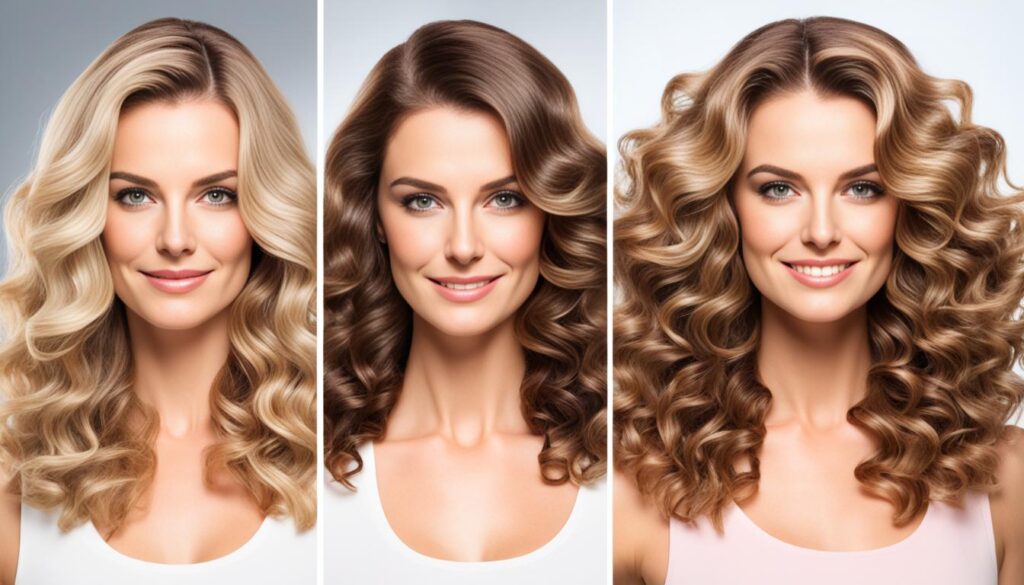
Professional Treatments for Rebonded Hair
Regular salon visits for trims and professional treatments can play a crucial role in maintaining the health and appearance of rebonded hair. These salon treatments are specifically designed to address the unique needs of chemically treated hair and provide the necessary care and nourishment it requires.
One of the most popular professional treatments for rebonded hair is deep conditioning. This treatment involves applying a rich and intensive conditioning mask to the hair, which helps to restore moisture, repair any damage caused by the rebonding process, and leave the hair feeling soft, smooth, and manageable.
In addition to deep conditioning, there are also strengthening treatments available at salons. These treatments typically involve the application of protein-based products to the hair, which help to strengthen the hair shaft and minimize breakage. By fortifying the hair from within, these treatments can improve the overall health and resilience of rebonded hair.
Salons also offer a variety of styling options for individuals with rebonded hair. From sleek and straight blowouts to glamorous updos, these professional styling techniques can help you achieve the desired look without compromising the integrity of your hair. The skilled hairstylists at the salon will use their expertise to ensure that your rebonded hair looks flawless and effortlessly styled.
Ultimately, investing in professional treatments for rebonded hair is a smart choice for those who want to maintain the health and appearance of their chemically treated hair. By visiting the salon regularly and availing of these treatments, you can ensure that your rebonded hair remains in optimal condition, looks stunning, and is the envy of others.

| Treatment | Description |
|---|---|
| Deep Conditioning | A nourishing treatment that restores moisture and repairs damage caused by rebonding. |
| Strengthening Treatments | Protein-based treatments that fortify the hair, preventing breakage and improving overall hair health. |
| Professional Styling | Skilled hairstylists offer a range of styling options that enhance the look of rebonded hair. |
Best Practices for Caring for Rebonded Hair
When it comes to caring for rebonded hair, adopting the right practices can make all the difference. By following these best practices, you can keep your hair looking smooth, healthy, and stunning.
Avoid Harsh Chemical Treatments
Chemical treatments like coloring, perming, or relaxing can be harsh on rebonded hair. These processes can weaken and damage the hair, leading to breakage and loss of smoothness. It’s crucial to avoid these treatments or opt for gentler alternatives to protect your rebonded hair.
Use Sulfate-Free Shampoos
Sulfates are harsh detergents commonly found in many shampoos. They can strip the hair of its natural oils and cause dryness and frizz. Opt for sulfate-free shampoos specifically formulated for rebonded hair. These shampoos gently cleanse without compromising the hair’s natural moisture.
Minimize Heat and Styling Product Usage
Excessive heat from styling tools like straighteners and curling irons can damage rebonded hair and make it prone to breakage. Try to minimize the use of heat and opt for heat protectant sprays when styling. Additionally, avoid excessive use of styling products containing alcohol, as they can further dry out the hair.
Regular Trims
Regular trims are essential to maintain the health of rebonded hair. Trimming the ends every 8-12 weeks helps prevent split ends and keeps the hair looking fresh and vibrant.
Avoid Excessive Washing
Washing the hair too frequently can strip away the natural oils that keep the hair moisturized and smooth. Aim to wash your rebonded hair every 2-3 days, or as needed. Consider using dry shampoo between washes to refresh the hair without over-washing.
Protect from Environmental Factors
Environmental factors like UV rays, pollution, and humidity can affect the appearance of rebonded hair. Protect your hair by wearing a hat or using products with UV protection. Additionally, consider wrapping your hair in a silk or satin scarf before going to bed to minimize friction and prevent frizz.
By following these best practices, you can maintain the beauty and smoothness of your rebonded hair. Remember to be gentle, choose appropriate products, and prioritize protection to ensure your hair looks and feels its best.
| Best Practices for Caring for Rebonded Hair |
|---|
| Avoid harsh chemical treatments |
| Use sulfate-free shampoos |
| Minimize heat and styling product usage |
| Regular trims |
| Avoid excessive washing |
| Protect from environmental factors |
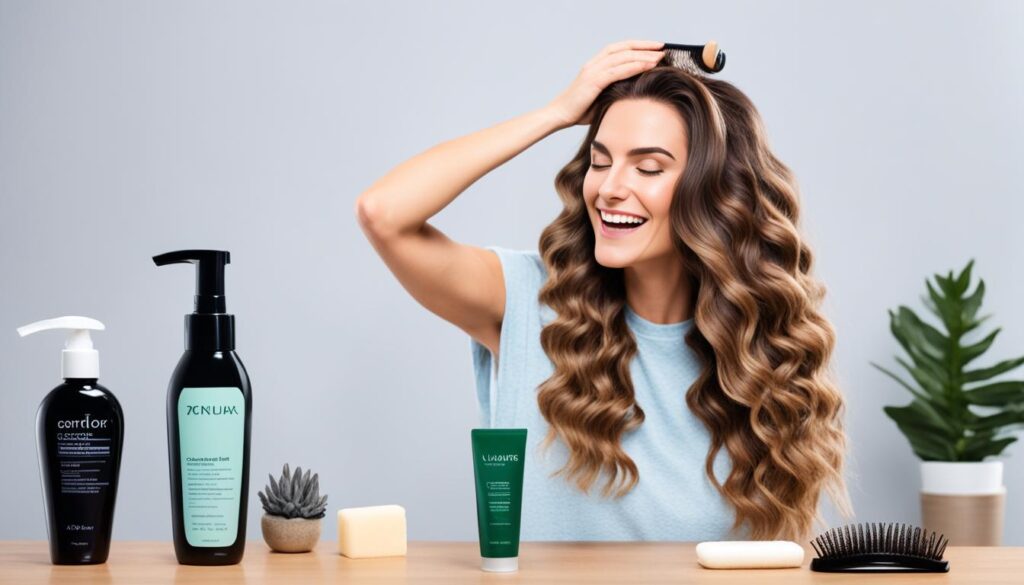
Curly Hair Care Tips During Transitioning
Transitioning from straight to curly hair can be an exciting journey, but it also requires adjusting your hair care routine to accommodate the unique needs of curly hair. To help you navigate this transition successfully, we’ve compiled some essential tips and techniques for caring for your curly locks.
1. Avoid Daily Washing
Curly hair tends to be drier and more prone to frizz, so washing it every day can strip away its natural oils and moisture. Instead, aim to wash your hair every 2-3 days to maintain its natural hydration and prevent excessive dryness.
2. Use Sulfate-Free Shampoos
Sulfates, commonly found in many shampoos, can be harsh and drying to curly hair. Opt for sulfate-free shampoos that are gentler on your curls, helping to retain moisture and minimize frizz. Look for products that are specifically formulated for curly or textured hair.
3. Embrace Natural Oils
Curly hair benefits from the natural oils produced by the scalp, which help to moisturize and nourish the hair. Avoid overwashing to allow these oils to distribute throughout the hair strands, promoting hydration and reducing frizz. You can also incorporate natural oils like coconut oil, argan oil, or jojoba oil into your hair care routine for added hydration and shine.
4. Finger Detangling
Curly hair is prone to tangling and breakage, especially during the transitioning process. Instead of using a brush or comb, gently detangle your curls with your fingers to minimize damage and preserve curl definition. Start from the ends and work your way up, using a leave-in conditioner or a detangling spray to facilitate the process.
5. Avoid Rubbing with Towel
When drying your hair after washing or showering, avoid rubbing it vigorously with a towel. This can roughen the hair cuticles and lead to frizz and breakage. Instead, gently squeeze out excess water using a microfiber towel or an old t-shirt, allowing your curls to retain their shape and bounce.
6. Use Hair Vitamins or Oils
To support healthy hair growth and strengthen your curls during the transitioning process, consider incorporating hair vitamins or oils into your routine. These supplements and products provide essential nutrients and moisture that can enhance the overall health and appearance of your curly hair.
| Curly Hair Care Tips | Benefits |
|---|---|
| Avoid daily washing | Retains natural oils and moisture |
| Use sulfate-free shampoos | Gentler on curly hair, minimizes frizz |
| Embrace natural oils | Moisturizes and nourishes curly hair |
| Finger detangling | Reduces breakage and preserves curl definition |
| Avoid rubbing with towel | Prevents frizz and breakage |
| Use hair vitamins or oils | Promotes healthy hair growth and strength |
By following these curly hair care tips during the transitioning process, you can nurture your curls, keep them hydrated, and minimize frizz. Embrace your natural texture and enjoy the beautiful, bouncy curls that emerge.
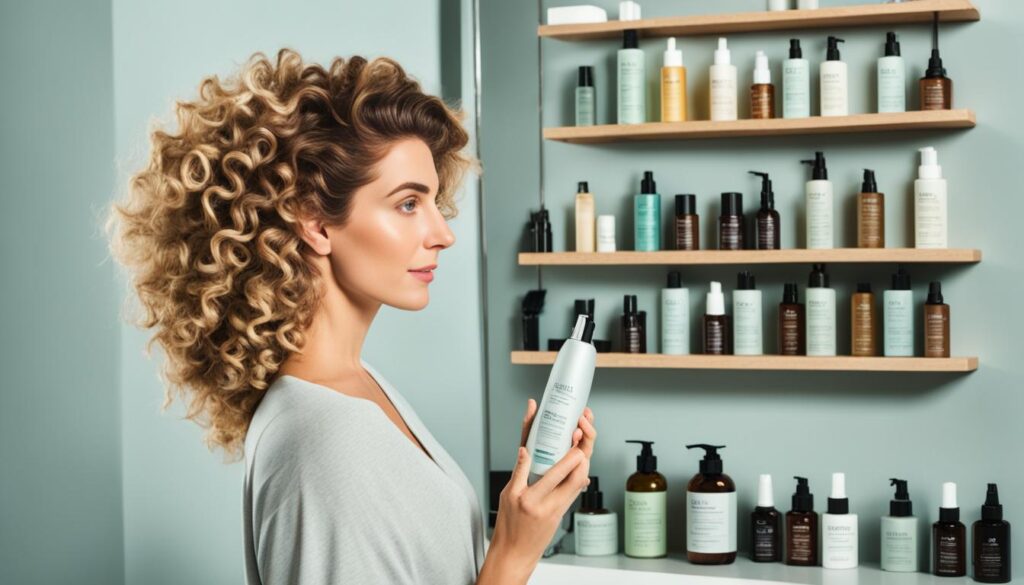
Styling Techniques for Curly Hair
Styling curly hair during the transitioning process can be a bit challenging, but with the right techniques, you can achieve fabulous results. Embracing your natural texture and experimenting with different hairstyles can help you navigate the journey to beautiful, well-defined curls. Here are some styling techniques to enhance the appearance of your curly hair:
Camouflage with Hairstyles
During the transitioning phase, you may have to deal with different textures as your hair grows out. One effective way to deal with this is by experimenting with hairstyles that help camouflage the contrasting textures. Updos, braids, twists, and bantu knots are all great options to blend the straightened and curly hair seamlessly.
Avoid Excessive Heat
Excessive heat can cause damage and lead to frizz and dryness. Embrace your natural curls and minimize the use of heat styling tools like flat irons and curling irons. If you do need to use heat, always apply a heat protectant spray and opt for low or medium heat settings.
Use Curl-Defining Products
Curl-defining products are a savior for styling curly hair. Look for products specifically formulated for curly hair, such as mousses, creams, and gels that enhance curl definition and provide moisture. Apply these products to damp hair, scrunching gently from the ends towards the roots, to encourage curl formation.

Protective Hairstyles
Incorporating protective hairstyles into your routine can help preserve the health of your transitioning hair. Protective styles like braids, twists, and buns not only protect the hair from damage but also help maintain the curl pattern. Make sure to avoid styles that pull too tightly or cause tension on the scalp.
Proper Hair Care
Maintaining proper hair care practices is crucial for healthy, well-defined curls. Use a sulfate-free shampoo and moisturizing conditioner to keep your curly hair hydrated. Regular deep conditioning treatments and gentle detangling with a wide-tooth comb or your fingers can help minimize breakage and maintain the curl pattern.
By embracing your natural curls, avoiding excessive heat, and using the right products and techniques, you can create stunning hairstyles and showcase the beauty of your transitioning curly hair.
Conclusion
Managing rebonded hair with curly roots requires patience, proper care, and a commitment to embracing natural hair. Understanding the transitioning process is essential in order to navigate the journey from chemically treated hair to natural curls. By gradually cutting off the damaged, straightened hair while caring for the new curly roots, individuals can achieve a harmonious balance.
Following aftercare routines is crucial for maintaining the health and appearance of rebonded hair. Using gentle shampoos, conditioners, and detanglers, as well as incorporating deep conditioning and hair masks, can help keep the hair moisturized and minimize breakage. Protective hairstyles such as braids and buns also aid in managing the different textures during the transitioning phase.
Adopting healthy hair care practices is key to sustaining healthy, smooth, and defined curly hair. It is important to avoid harsh chemical treatments and opt for sulfate-free shampoos. Minimizing heat and styling product usage, as well as regularly trimming the hair to prevent split ends, can significantly contribute to maintaining rebonded hair. Additionally, protecting the hair from environmental factors and embracing a healthy diet promote the longevity of the desired look.









